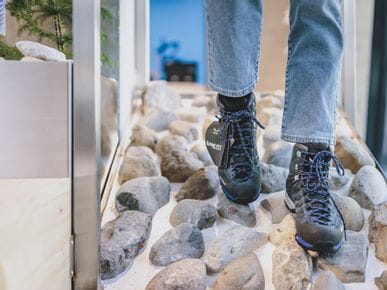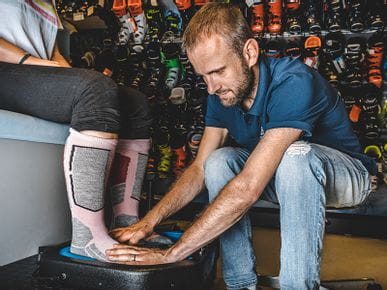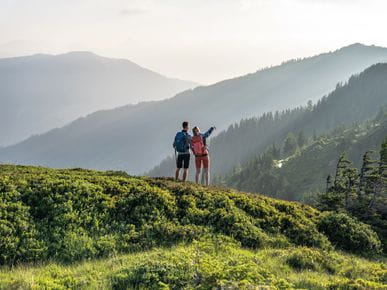Blister-free on the trail: How to hike without pain
Anyone who loves hiking in the mountains knows the problem: blisters on your feet can turn even the most beautiful hike into a painful ordeal.
But don’t worry – with a few simple tricks and the right gear, you can prevent blisters and fully enjoy your hikes again. Here’s how to stay pain-free on the trail – step by step.

Hiking Boots
The foundation of every step
Well-fitting hiking boots are essential for healthy feet. They shouldn’t pinch or slip and need to offer enough room in the toe box – especially on long descents. Get expert advice in one of our shops and try out your favorites on our in-house hiking boot test trail. This way, you’re sure to find the perfect pair for your feet and your next adventure. And if something still doesn’t feel right: our fit guarantee allows for an easy exchange after the first wear.
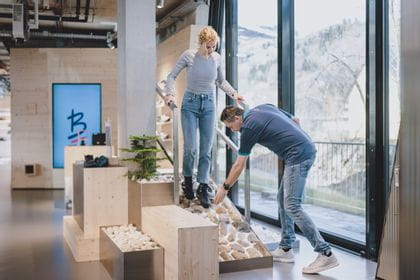
Socks & Lacing
Small details, big impact
Go for high-quality hiking socks – ideally seamless, breathable, and made of merino wool or technical fabric. These materials wick moisture away from the skin and help prevent irritation. A second pair in your backpack is always a good idea, especially on longer hikes or when the weather turns. Also, pay attention to proper lacing: with two-zone lacing, you can tie the forefoot more loosely and the heel more tightly to prevent slipping inside the shoe.
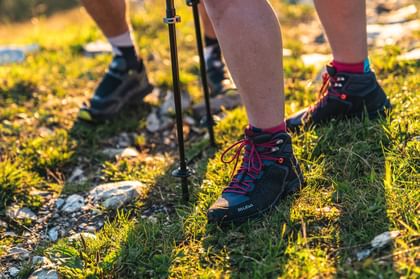
Preparation & Care
A good plan is half the hike
You can do a lot before your tour even begins: break in new boots with shorter hikes or walks to get your feet used to them. Make sure your feet are dry before putting on your socks, and use anti-blister sticks or deer tallow cream to keep your skin supple. At the first sign of friction, act quickly – blister plasters or tape should be essentials in your backpack and can work wonders when needed.
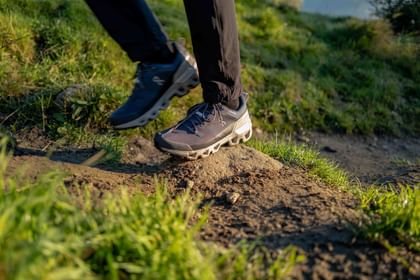
Conclusion: Start your mountain adventures pain-free
With the right preparation, well-fitting boots, and a few smart tricks, you can successfully avoid blisters while hiking. Take the time to prepare yourself and your gear – your feet will thank you. And if something still feels off: at Bründl Sports, our expert advice and fit guarantee always have you covered.
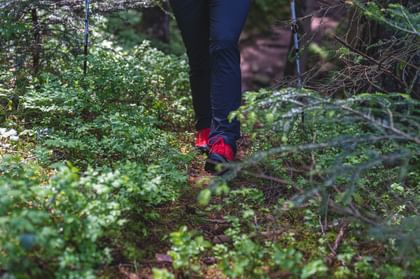
FAQ – Häufige Fragen zum richtigen Schuhwerk und Blasenvermeidung
Hiking boots shouldn’t fit as tightly as everyday shoes. There should be about a thumb’s width of space in front of your big toe. Your heel should stay in place without slipping. It’s best to try them on with the hiking socks you’ll wear on the trail.
Look for seamless construction to avoid pressure points. Breathable materials like merino wool or technical fibers are highly recommended. The socks should fit perfectly without bunching and have padded zones at the heel and toe for extra comfort.
Two-zone lacing lets you tie the forefoot more loosely and the upper part more tightly to prevent slipping and ensure stability on uneven terrain. Especially on longer hikes, it’s worth re-tightening the laces from time to time.
We recommend breaking in new hiking boots on short walks first. Dry your feet thoroughly before setting off and pack extra socks – dry feet are worth their weight in gold. You can protect pressure points early on with blister plasters or tape.
If you're unsure which model is right for you, visit us and try out our in-house hiking boot test trails at various Bründl Sports locations. You can test different shoes, compare how they feel, and find the perfect fit. More info here: Test hiking boots at Bründl Sports
